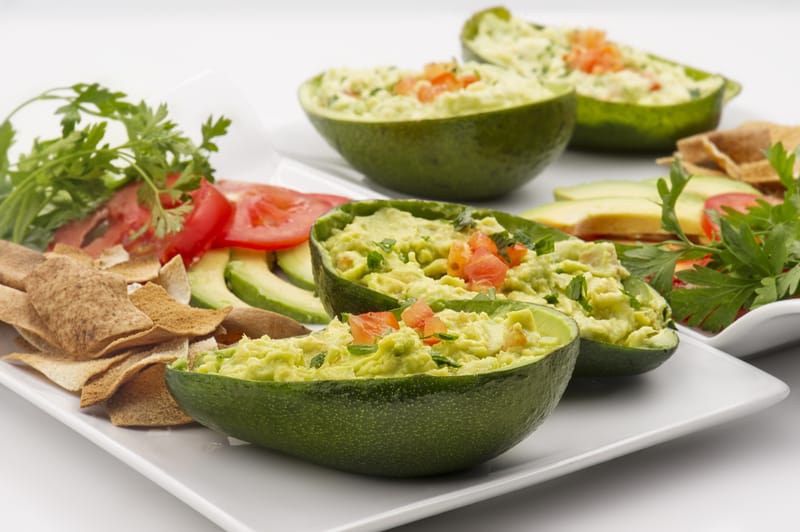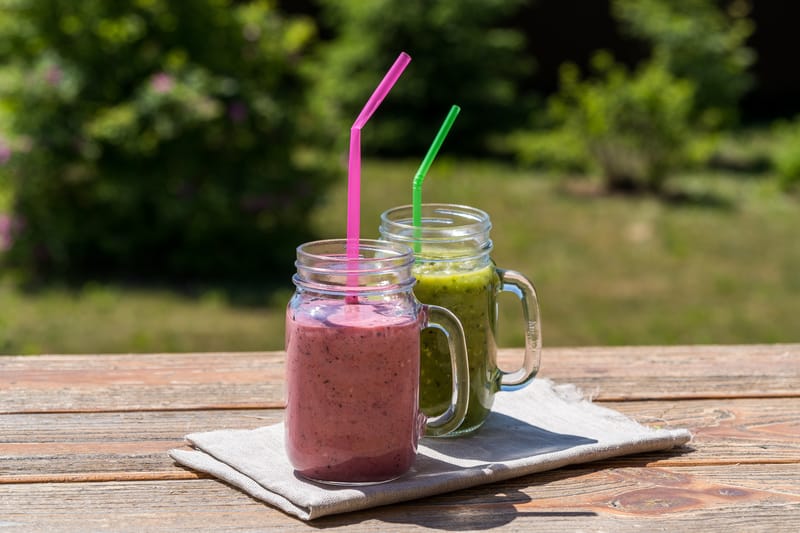Avocados are more than just a trendy toast topping; they’re a nutritional powerhouse that can be a great addition to your weight loss plan. Despite being high in fats, avocados are packed with healthy monounsaturated fats, fiber, vitamins, and minerals that contribute to overall health. In this article, we’ll explore how avocados can help you lose weight, the best ways to eat them, and tips for incorporating them into your daily diet.
1. Understanding the Nutritional Benefits of Avocado
Before diving into how to use avocados for weight loss, it’s essential to understand why they are good for you. Avocados are rich in:
- Healthy Fats: Avocados contain monounsaturated fats, which help to reduce bad cholesterol levels and lower the risk of heart disease. Unlike saturated fats, these fats are beneficial for your body.
- Fiber: A single avocado contains about 10 grams of dietary fiber, which aids digestion, keeps you full longer, and helps prevent overeating.
- Vitamins and Minerals: Avocados are a good source of vitamins C, E, K, and B-6, as well as folate, magnesium, and potassium. These nutrients are vital for maintaining good health.
- Antioxidants: Avocados are loaded with antioxidants like lutein and zeaxanthin, which are beneficial for eye health and overall wellness.
The combination of these nutrients makes avocados an excellent food for those looking to lose weight in a healthy, sustainable way.
2. How Avocados Aid Weight Loss
There are several ways in which avocados can contribute to weight loss:
- Promote Satiety: The fiber and healthy fats in avocados make them highly satiating. Eating avocados can help you feel full for longer, reducing the likelihood of snacking on unhealthy foods between meals.
- Boost Metabolism: The monounsaturated fats in avocados can help boost your metabolism, which means your body burns more calories even at rest.
- Regulate Blood Sugar Levels: The fiber in avocados slows down the digestion of carbohydrates, which helps maintain stable blood sugar levels. Stable blood sugar levels can prevent insulin spikes that can lead to fat storage.
- Support Nutrient Absorption: Avocados help your body absorb fat-soluble vitamins (A, D, E, and K) from other foods. This means you get more nutrients out of the foods you eat when you include avocados in your diet.
3. Incorporating Avocado into Your Diet
There are countless ways to enjoy avocados, but here are some of the best methods to incorporate them into your diet for weight loss:
3.1 Avocado as a Meal Addition
Adding avocado to your meals is one of the simplest ways to enjoy its benefits. Here are a few ideas:
- Salads: Dice half an avocado and add it to your salad. The creaminess of the avocado pairs well with leafy greens, tomatoes, cucumbers, and other fresh vegetables. You can even use mashed avocado as a dressing base mixed with lemon juice and olive oil.
- Smoothies: Blend half an avocado into your morning smoothie. Avocados add a creamy texture without the need for dairy and provide a healthy dose of fats and fiber to start your day right.
- Sandwiches and Wraps: Replace mayo with avocado slices or mash avocado on your sandwich or wrap. This simple swap reduces unhealthy fats while boosting the nutritional content of your meal.
3.2 Avocado as a Snack
Avocados make for a satisfying snack that can keep hunger at bay:
- Guacamole: Make a healthy guacamole by mashing an avocado with lime juice, chopped tomatoes, onions, and cilantro. Enjoy it with whole-grain crackers, vegetable sticks, or as a spread on whole-wheat toast.
- Avocado Toast: Spread mashed avocado on a slice of whole-grain bread and top it with a sprinkle of salt, pepper, and a drizzle of olive oil. You can also add toppings like cherry tomatoes, poached eggs, or a sprinkle of seeds.
- Avocado and Cottage Cheese: Pair avocado slices with low-fat cottage cheese. The combination of healthy fats and protein will keep you full and satisfied.
3.3 Avocado as a Cooking Ingredient
You can use avocados as a substitute for less healthy ingredients in your cooking:
- Baking: Use avocado in place of butter or oil in your baking recipes. The avocado adds moisture and healthy fats to baked goods like brownies, muffins, and cookies without compromising flavor.
- Creamy Soups: Blend avocado into your soups to create a creamy texture without using cream. This is especially delicious in cold soups like gazpacho.
- Pasta Sauces: Make a creamy avocado pasta sauce by blending avocado with garlic, lemon juice, and olive oil. Toss it with whole-grain pasta for a nutritious meal.
4. Portion Control and Calorie Awareness
While avocados are healthy, they are also calorie-dense, so it’s essential to practice portion control. Here’s how to enjoy avocados without overdoing it:
- Stick to Half an Avocado: A typical serving size is half an avocado, which contains about 120-160 calories. This amount provides the benefits of avocado without adding too many extra calories to your diet.
- Balance Your Meals: If you include avocado in one meal, be mindful of your fat intake for the rest of the day. Balance it with other low-calorie, high-fiber foods like vegetables and lean proteins.
- Track Your Calories: Use a food diary or a calorie-tracking app to monitor your avocado intake as part of your overall daily calorie goals. This can help ensure you’re not unknowingly consuming too many calories.
5. Avocado Recipes for Weight Loss
Here are a few delicious avocado recipes that are perfect for anyone looking to lose weight:
5.1 Avocado and Quinoa Salad
Ingredients:
- 1 cup cooked quinoa
- 1 ripe avocado, diced
- 1 cucumber, diced
- 1 cup cherry tomatoes, halved
- 1/4 cup red onion, finely chopped
- Juice of 1 lemon
- 2 tbsp olive oil
- Salt and pepper to taste
Instructions:
- In a large bowl, combine the quinoa, avocado, cucumber, cherry tomatoes, and red onion.
- In a small bowl, whisk together the lemon juice, olive oil, salt, and pepper.
- Pour the dressing over the salad and toss to combine.
- Serve immediately or refrigerate for later.
5.2 Avocado Egg Salad
Ingredients:
- 4 hard-boiled eggs, chopped
- 1 ripe avocado, mashed
- 1 tbsp Greek yogurt
- 1 tsp Dijon mustard
- 1 tbsp fresh dill, chopped
- Salt and pepper to taste

Instructions:
- In a medium bowl, combine the chopped eggs and mashed avocado.
- Add the Greek yogurt, Dijon mustard, dill, salt, and pepper. Mix well.
- Serve the avocado egg salad on whole-grain bread, in a wrap, or with lettuce leaves.
5.3 Avocado and Berry Smoothie
Ingredients:
- 1/2 ripe avocado
- 1/2 cup mixed berries (strawberries, blueberries, raspberries)
- 1/2 banana
- 1 cup almond milk
- 1 tbsp chia seeds
- Ice cubes (optional)
Instructions:
- Add all ingredients to a blender.
- Blend until smooth and creamy.
- Pour into a glass and enjoy as a filling breakfast or snack.

6. When and How Often to Eat Avocado
Timing and frequency can also play a role in how effectively avocados aid in weight loss:
- Morning Consumption: Eating avocado in the morning, such as in a smoothie or on toast, can help stabilize your blood sugar levels and keep you full until lunch.
- Pre-Workout Snack: A small serving of avocado can provide the energy you need for a workout, thanks to its healthy fats and fiber.
- Daily Intake: Incorporating avocado into your diet daily or several times a week can provide consistent health benefits, but be mindful of overall calorie intake.
7. Potential Pitfalls and How to Avoid Them
While avocados are a healthy food choice, there are a few potential pitfalls to be aware of:
- Overeating: Due to their high-calorie content, it’s easy to overeat avocados, which can hinder weight loss. Stick to recommended portion sizes.
- Pairing with High-Calorie Foods: Be cautious of pairing avocado with high-calorie foods like fried chips, heavy cheeses, or fatty meats. Instead, pair it with whole grains, lean proteins, and vegetables.
- Allergies: Although rare, some people may be allergic to avocados. If you experience any adverse reactions, such as itching, swelling, or digestive discomfort, discontinue use and consult a healthcare provider.
8. Scientific Evidence Supporting Avocado Consumption for Weight Loss
Research has shown that incorporating avocados into your diet can be beneficial for weight management:
- A study published in the Journal of Nutrition found that eating avocados as part of a meal increased satiety and reduced the desire to eat over the next five hours compared to a low-fat meal .
- Another study published in the Nutrition Journal found that overweight participants who consumed avocados as part of a meal had a reduced desire to eat over the next few hours .
- Research also suggests that diets rich in monounsaturated fats, like those found in avocados, are more effective for weight loss than low-fat diets .
These studies highlight the potential benefits of avocados for weight loss when consumed as part of a balanced diet.
9. Conclusion: The Role of Avocados in a Healthy Weight Loss Plan
Avocados are a versatile, nutritious food that can play a significant role in a weight loss plan. Their combination of healthy fats, fiber, and essential nutrients makes them a valuable addition to any diet. By incorporating avocados into your meals and snacks, practicing portion control, and balancing your overall calorie intake, you can enjoy the benefits of this superfood while working toward your weight loss goals.
Remember, weight loss is most effective when it’s part of a comprehensive plan that includes a balanced diet, regular physical activity, and healthy lifestyle choices. Always consult with a healthcare provider or a nutritionist before making significant changes to your diet.
References:


